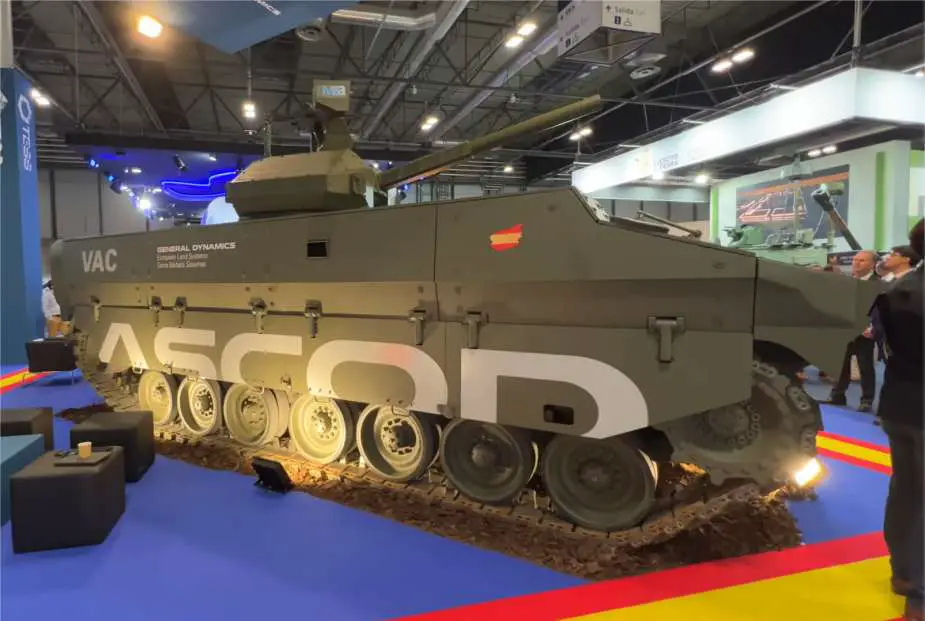Breaking news
Spain to sign contract for production of VAC Tracked Support Vehicles.
Spain is poised to sign a contract in December with the industrial consortium Tess Defense for the supply of Tracked Support Vehicles (VAC). This contract includes the initial production of 394 units for an amount of 1.97 billion euros, intended to replace the aging fleet of Armored Tracked Transport (TOA) vehicles of the army. The VAC, based on the Ascod platform of GDELS-SBS, a member of the consortium, will initially equip two of the army's mechanized brigades.
Follow Army Recognition on Google News at this link

Spanish VAC tracked support vehicle (Picture source: video footage from Spanish MoD)
This was confirmed by Colonel Antonio Llorens, head of the Pizarro and VAC programs at the General Directorate of Armament and Material (DGAM), during his remote participation in the Future Armored Vehicles Survivability (FAVS) conference, held in mid-November in London.
The Tracked Support Vehicle (VAC) represents an advancement in the field of terrestrial military vehicles. Designed to replace the aging Armored Caterpillar Transport (TOA), the VAC is a versatile armored vehicle, adaptable to a multitude of missions and operational environments. Its modular design allows for various tasks ranging from troop and material transport to more specialized roles such as artillery support, combat engineering, or command and control functions. The flexibility of the VAC is a major asset, allowing it to adapt to the changing needs of modern armed forces.
Technically, the VAC weighing about 34 tons, is designed for optimal mobility on both road and rough terrain. Its maximum speed of 74 km/h and a range of 450 km on paved roads make it ideal for rapid and prolonged operations. Its platform is based on the Ascod model from GDELS-SBS, known for its reliability and robustness. Moreover, the VAC incorporates cutting-edge protection technologies, compliant with NATO standard 4569. This includes adaptable armor and sophisticated active protection systems, capable of countering various threats, from projectiles to electronic attacks.
The VAC can be configured in several specific versions. This includes configurations such as the command post, personnel transport, and the engineering vehicle. Specialized versions like the mortar carrier, anti-tank vehicle, advanced artillery observer, as well as models intended for recovery and ambulance functions, demonstrate the exceptional versatility of the VAC. This modularity makes the VAC an essential tool for the armed forces, capable of adapting to a wide range of operational scenarios while ensuring maximum protection and efficiency for its occupants.
The VAC program has a budget of 1.97 billion euros. The government approved the contract at the end of August, and since then, the DGAM has been working on the contract specifications and necessary procedures for its signing. The project will be awarded to Tess Defense, which manages the VCR 8x8 and includes Santa Bárbara Sistemas, Indra, Sapa Placencia, and Escribano. The Defense Minister, Margarita Robles, announced in July that the vehicles would be manufactured at the Santa Bárbara Sistemas plant in Trubia, Asturias.






















